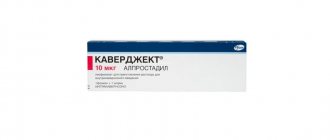The drug Glucose is a very necessary remedy for many patients. First of all, the medicine is necessary as a source of energy necessary to nourish tissues and cells. Cell activity depends on how well the body is able to metabolize the compounds.
First of all, glucose enters the body through consumed food. Once in the gastrointestinal tract, the substance breaks down into simple molecules, which enter the bloodstream and are distributed throughout the body.
There is no need to worry about what dose of a substance is needed, because the excretory system removes excess from the body.
Where does glucose come from?
Blood glucose reserves appear not only from food consumed.
If glucose levels begin to fall, the body will launch mechanisms to break down strategic reserves. Certain enzymes remove glucose molecules from the glycogen chain (stored in the liver) and send them into the bloodstream. Thanks to this process, normal glucose levels are maintained in the body.
It is important to know that after hypoglycemia, sharp jumps in plasma glucose levels often occur, which are very difficult to deal with.
The body also extracts glucose from fat reserves, but this process is lengthy. This method is used during heavy exercise or prolonged fasting.
At what age can the solution be used?
A 5% solution can be used for children from birth. More concentrated solutions without dilution are contraindicated in childhood, as they are hypertonic. Children are especially sensitive to a lack of water, without which a full metabolism is impossible.
If you use plain water during dehydration accompanied by a lack of electrolytes, the condition will stabilize for a long time. In this case, dehydration occurs mainly due to extracellular fluid, which has an extremely negative effect on the movement of blood through the vessels, and it quickly thickens.
The oral form is preferable in children, even if there is repeated vomiting (in this case, the solution is given after 10 minutes). Timely initiation of rehabilitation therapy allows in many cases to avoid hospitalization and exicosis - severe dehydration, which often occurs with intestinal infections, influenza, acute respiratory infections, pneumonia and other infectious diseases.
In addition, electrolyte solutions that do not contain glucose may worsen diarrhea because their effects are similar to saline laxatives. For mild to moderate dehydration in children, according to the recommendations of the World Health Organization, glucose intake through the mouth is sufficient, without injections.
As studies show, this method of treatment allows you to quickly normalize the concentration of sodium and potassium in the blood and requires less time for medical preparation.
For newborn children, the solution is also prescribed for jaundice in order to detoxify the body. It is given in between feedings.
Composition of the drug
One tablet of the drug contains 1 g of glucose monohydrate. The auxiliary ingredients are:
- Calcium stearate
- Potato starch
- Talc
- Stearic acid
Glucose tablets are produced in a round shape, their surface is flat.
If the drug is produced in a “set” with ascorbic acid, a chamfer and a dash are applied to the tablets.
The drug is placed in 10 pieces in blister packs. The cardboard package may contain 1 or 2 blisters and instructions for use.
Drug interactions
Features of interaction with other drugs are as follows:
- chemical or therapeutic incompatibility with some agents is possible, so visual inspection is necessary;
- glucose solution is not used as a solvent for those drugs that lose their stability in an acidic environment, since it contains hydrochloric acid;
- In order to increase osmolarity, a combination of glucose and sodium chloride solutions is used.
pharmachologic effect
Glucose (dextrose) belongs to the category of monosaccharides. The substance is found in the juice of various berries (in particular grapes), which is why it is sometimes called grape sugar.
Oligosaccharides and disaccharides consist of glucose units.
Once in the digestive system, complex saccharides break down into fructose and glucose.
Glucose, as a monosaccharide, is found in:
- Lymph
- Blood
- Myocardium
- Skeletal muscles
Glucose is a participant in carbohydrate metabolism and affects metabolism.
Dextrose is necessary for carbohydrate nutrition of muscles and brain; the substance is well and quickly absorbed and helps improve human performance.
Sources
The monosaccharide is found in animal muscle glycogen, starch, berries and fruits. A person receives 50% of the energy needed by the body from glycogen (deposited in the liver and muscle tissue) and the consumption of glucose-containing foods.
The main natural source of the compound is honey (80%), it also contains another healthy carbohydrate - fructose.
Nutritionists recommend stimulating the body to extract saccharides from food, avoiding refined sugar.
Table No. 1 “What contains glucose”
| Product name | Monosaccharide content per 100 grams, grams |
| Rafinated sugar | 99,7 |
| Bee Honey | 80,1 |
| Marmalade | 79,2 |
| Gingerbread | 77,6 |
| Pasta | 70,5 |
| Sweet straw | 69,1 |
| Dates | 69,0 |
| Pearl barley | 66,8 |
| Dried apricots | 66,1 |
| Raisin | 65,6 |
| Apple jam | 65,0 |
| Chocolate | 63,2 |
| Rice | 62,2 |
| Oatmeal | 61,7 |
| Corn | 61,3 |
| Buckwheat | 60,3 |
| White bread | 52,8 |
| Rye bread | 44,2 |
| Ice cream | 21,2 |
| Potato | 8,0 |
| Apples | 7,8 |
| Grape | 7,7 |
| Beet | 6,6 |
| Carrot | 5,6 |
| Cherry | 5,4 |
| Cherries | 5,4 |
| Milk | 4,4 |
| Gooseberry | 4,3 |
| Pumpkin | 4,1 |
| Legumes | 4,1 |
| Cabbage | 4,0 |
| Raspberries | 3,8 |
| Tomatoes | 3,3 |
| Cottage cheese | 3,2 |
| Sour cream | 3,0 |
| Plums | 3,0 |
| Liver | 2,7 |
| Strawberry | 2,6 |
| Cranberry | 2,4 |
| Watermelon | 2,3 |
| Oranges | 2,3 |
| Apricots | 2,1 |
| Tangerines | 2,0 |
| Cheese | 2,0 |
| Peaches | 2,0 |
| Pear | 1,7 |
| Black currant | 1,4 |
| cucumbers | 1,2 |
| Oil | 0,4 |
| Eggs | 0,3 |
Why is Glucose useful?
Glucose is widely used for the treatment of various pathologies, as it has a good effect on metabolic processes.
Pregnant women are prescribed glucose:
- If you suspect that the intrauterine fetus is smaller than the required size
- To reduce the chance of miscarriage
- To prevent premature birth
After consuming glucose, you feel better and fatigue goes away.
During pregnancy and lactation, it is necessary to constantly monitor plasma sugar levels.
Indications for use
The appearance of the pharmaceutical product depends on the manufacturing company and the presence of other components.
Doctors prescribe regular glucose in tablets, as well as its combination with ascorbic acid, for:
- During pregnancy
- Breastfeeding
- Avitaminosis and hypovitaminosis
- Increased need for vitamin C and glucose
In addition, the medication is necessary for children during periods of intensive growth.
Glucose is excellent for recovery after severe pathology and physical activity.
Benefits and harms
The main functions of glucose are nutritional and energy. Thanks to them, it maintains heartbeat, breathing, muscle contraction, brain function, nervous system and regulates body temperature.
The value of glucose in the human body:
- Participates in metabolic processes and is the most digestible energy resource.
- Supports the body's performance.
- Nourishes brain cells, improves memory and learning.
- Stimulates the heart.
- Quickly quenches the feeling of hunger.
- Relieves stress, corrects mental state.
- Accelerates the recovery of muscle tissue.
- Helps the liver in neutralizing toxic substances.
Glucose has been used for many years to relieve intoxication in the body during hypoglycemia. The monosaccharide is part of blood substitutes, anti-shock drugs used to treat diseases of the liver and central nervous system. Many drugs are injected into a vein using glucose, including novocaine and potassium chloride, which are often used in medical practice.
In addition to its positive effects, glucose can harm the body of people in old age, patients with impaired metabolism and lead to the following consequences:
- obesity;
- development of thrombophlebitis;
- overload of the pancreas;
- the occurrence of allergic reactions;
- increased cholesterol;
- the appearance of inflammatory, heart diseases, coronary circulation disorders;
- arterial hypertension;
- damage to the retina of the eye;
- diabetes mellitus;
- endothelial dysfunction.
Remember, the amount of monosaccharide ingested into the body must be fully compensated by the expenditure of calories for energy needs.
Contraindications to the use of Glucose
Glucose solution is contraindicated in patients who suffer from:
- hyperglycemia
- decompensated diabetes mellitus
- hyperosmolar coma
- impaired glucose utilization in the postoperative period
- hyperlactic acidemia
Intravenous administration of Glucose is carried out with caution when:
- chronic renal or heart failure
- hyponatremia
- Glucose tablets are contraindicated for:
- diabetes mellitus
- overhydration
- cerebral edema
- pulmonary edema
- circulatory diseases in which there is a high risk of pulmonary or cerebral edema
- acute left ventricular failure
special instructions
If Glucose is administered too quickly and for a long time, the following may occur:
- Hyperosmolarity;
- Hyperglycemia;
- Osmotic diuresis (as a result of hyperglycemia);
- Hyperglucosuria;
- Hypervolemia.
If symptoms of overdose occur, it is recommended to take measures to eliminate them and supportive therapy, including the use of diuretics.
Signs of overdose caused by additional drugs diluted in a 5% Glucose solution are determined primarily by the properties of these drugs. In case of overdose, it is recommended to leave the solution and carry out symptomatic and supportive treatment.
There are no cases of drug interactions between Glucose and other medications.
During pregnancy and breastfeeding, Glucose is approved for use.
In order to better assimilate Glucose, patients are simultaneously prescribed subcutaneous insulin at the rate of 1 IU per 4-5 g of Glucose.
It is not recommended to administer Glucose immediately after blood transfusions in the same system, as there is a possibility of thrombosis and hemolysis.
The Glucose solution is suitable for use only if it is transparent, the packaging is intact and there are no visible impurities. The solution should be used immediately after connecting the bottle to the infusion system.
It is forbidden to use sequentially connected containers of Glucose solution, as this may cause the development of an air embolism due to the absorption of the air remaining in the first package.
Other drugs should be added to the solution before or during the infusion by injection into a specially designated area of the container. When adding the drug, you should check the isotonicity of the resulting solution. The solution resulting from mixing should be applied immediately after preparation.
The container must be thrown away immediately after using the solution, regardless of whether there is any medicine left in it or not.
Glucose in ampoules, can I drink it?
Glucose can be taken orally, as its regular solution does not contain substances that can be harmful. The medicinal liquid tastes quite pleasant, reminiscent of ordinary sweet water.
You can drink glucose in ampoules if there is a sharp decrease in blood pressure or if a diabetic has exceeded the dosage of insulin. However, for these problems, it is wiser to drink strong, sweet tea.
In case of poisoning, glucose is often prescribed, but its oral use during intoxication can provoke additional vomiting.
Price
The average price for the drug is as follows:
- plastic container 200 ml – 35 rubles;
- glass bottle 200 ml – 25 rubles;
- glass bottle 400 ml – 30 rub.
Glucose is a universal source of energy that is easily absorbed by the human body and causes a minimum number of complications. A 5% solution is isotonic to blood plasma, that is, its osmotic pressure is the same as in living cells.
This concentration is safe for use in children (more concentrated solutions are contraindicated in children). The drug can be used both at home for rehydration and in hospitals in the complex treatment of various diseases.
Mode of application
Children over three years of age and adults can take the classic form of the drug, 0.5-1 tablets three times a day. If the doctor considers it necessary to prescribe a combined form of the drug (with ascorbic acid), the dosage must be recalculated, taking into account the content of vitamin C in the tablet. Typically, the dose for treatment varies from 50 to 100 mg per day 3-5 times a day.
For preventive purposes, adult patients are allowed to take up to 100 mg of the drug per day. Children 6-14 years old should not take more than 50 mg of the drug per day.
It is important to understand that the dosage and duration of therapy must be adjusted by the attending physician.


